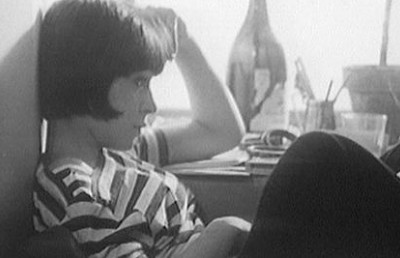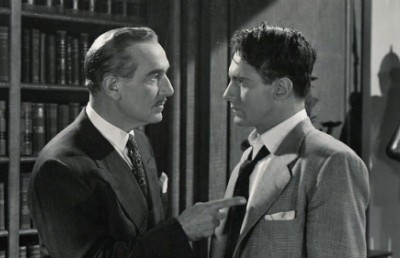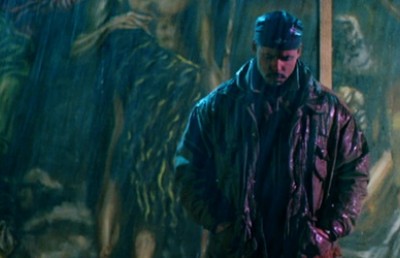Charting the Quebec Film Industry: A Review of Crosscurrents: How film policy developed in Quebec, 1960-1983 (Constance Dilley, 2018)
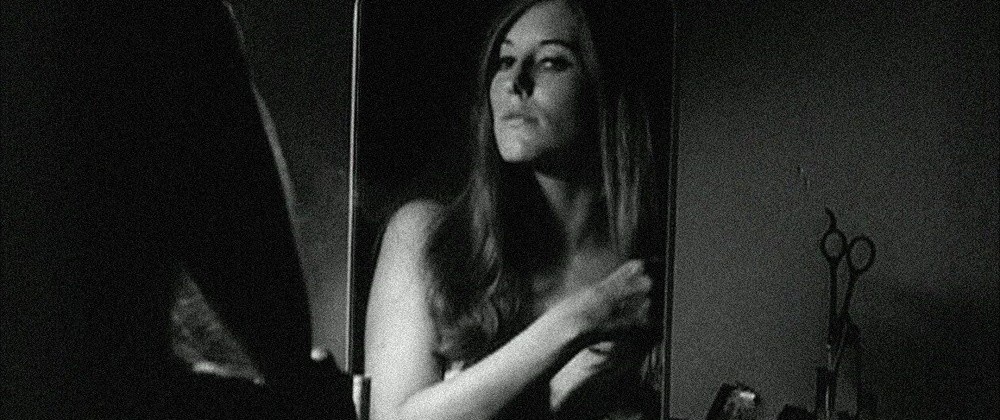
Crosscurrents: How Film Policy Developed in Quebec 1960–1983. By Constance Dilley. Foreward by Claude Martin. Quebec City: Presses de L’Universitié du Québec, 2018. 302 pp. ISBN 9782760549388.
At the beginning of the 1960s, Canadian cinema largely consisted of the National Film Board (NFB) with its often stellar, but non-commercial, output of documentaries, cartoons, dramatic shorts, and experimental films. Outside of that, there were outfits like Crawley Films, which made sponsored short films for private companies and were gradually encroaching on the NFB’s role of making commissioned films for government departments. In Quebec, there were only twenty-two of these small businesses, employing between them just fifteen directors. There had been a brief flourishing of French-language feature filmmaking in Quebec in the late 1940s and early ‘50s. A number of low budget productions had been very popular with Quebec audiences, but without government support the fledgling film industry was unable to solve the problems of a lack of finance capital and the impossibility of marketing the films outside the province. The arrival of television in the early 1950s, enabling French-speaking Quebeckers to watch original French-language programming without having to go to the cinema, led to the already shaky industry’s collapse. Associated Screen News (ASN), a Montreal-based company which had been providing material for newsreels and making short films to be shown in Canadian cinemas before the main feature since 1921, shut its doors in 1958, another victim of television. There were some stirrings in English Canada, with Nat Taylor producing a few low budget movies in Toronto, one of which, 1961’s 3-D horror film The Mask (Julian Roffman), was the first Canadian feature to receive relatively wide distribution in the U.S. since Back to God’s Country (David Hartford) way back in 1919. However, it is fair to say there was virtually no Canadian competition to the Hollywood features which thoroughly dominated the country’s cinemas, and it was clear that creating a durable feature film industry in Canada would require government help, particularly as Canadian audiences seemed to have few problems with Hollywood’s hegemony. It was also clear that Montreal, home of the NFB, Radio Canada (French arm of the Canadian Broadcasting Corporation), ASN, and the remnants of a once active film industry, was, because of this concentration of facilities and trained film personnel, the obvious location for a new Canadian movie capital.
This is the situation at the beginning of Constance Dilley’s new book, Crosscurrents: How film policy developed in Quebec, 1960-1983, which recounts the way in which feature filmmaking in Canada went from close to non-existent in 1960 to a visible and growing industry by 1983. Dilley uses the long saga of how the Quebec government slowly came to be committed to, and finally enact, a loi-cadre, a legal framework establishing the responsibilities of the government in its role as overseer of the production, distribution, and exhibition of films in the province, as a narrative thread that leads the reader through an often complicated history. Closely entwined with this story is the gradual commitment of the federal government to the creation of a private sector feature film industry, particularly through the establishment of the Canadian Film Development Corporation (CFDC) in 1967. Dilley’s retelling of the way in which key film policies were developed in Quebec and Ottawa provides a fresh and often provocative perspective on the origins of Canadian cinema.
Tracing the actions of a few key bureaucrats in Quebec City and Ottawa, along with the efforts of a handful of aspiring producers and directors in Montreal who lobbied both levels of government, Dilley carefully sorts through what must have been mountains of bureaucratic memos, ministerial briefing papers, industry studies, and lobbying briefs to show how a relatively small group of individuals created a feature film industry pretty much from scratch. As administrator of both the Quebec Producer’s Association and the film journal Cinéma Québec in the early 1970s, and then editor of Cinema Canada from 1975 to 1988, Dilley was in a privileged position to observe these events, and supplements her extensive research with personal anecdotes which illuminate and enhance the written record provided by archival documents.
Dilley offers an alternative narrative to scholars who have treated the creation of a Quebec film industry as part of the nationalist wave that washed over the province in the 1960s and ‘70s, the natural cultural expression of the era’s political and social changes. Her focus, unlike that of many other film historians, is not based on the analysis of key films, but on the formation of government policies, and the subsequent effects of these policies on the type of films that were produced. As a result of this governmental-industrial approach, she argues persuasively that none of the main players at the beginning of the 1960s were primarily motivated by nationalist fervor. Montreal filmmakers working at the NFB or Radio-Canada wanted to be free of the limitations imposed by those institutions and instead make feature films, preferably in the manner of the era’s new cinematic heroes: François Truffaut, Jean-Luc Godard, and their nouvelle vague comrades. Producers working in the small local private sector noted that foreign film companies from France, the U.K., and in particular Hollywood earned over $400 million at Quebec’s commercial box office in 1960, and wanted a piece of the action. The Quebec government, for its part, was concerned with French culture, but not in the sense that they were interested in creating films that would bolster a nationalist, let alone a souverainiste, project. Rather, Quebec’s elites, as represented by the new Liberal government’s Minister of Culture Georges-Émile Lapalme and his deputy, Guy Frégault, were worried about the erosion of the French language in Quebec, both in terms of how much was spoken and the decline in quality of how it was spoken, as well as the overall negative effect on society they believed resulted from the widespread popularity of mass (that is, American) culture. They were therefore primarily interested in supporting the creation of “good” culture to elevate and improve the population.

Author speaks at the Montreal book launch of Crosscurrents, at the Cinémathèque québécoise
This initial lack of nationalist feeling is central to Dilley’s thesis, which is that the story she tells is one of lost opportunity. She argues that Montreal had the chance to become the center of a thriving, self-sustaining film industry, a “Hollywood North” producing commercial films for an international audience, but was sidetracked by government policies that gradually came to elevate cultural and political concerns at the expense of economic considerations. In Quebec, the tension between commercial and cultural objectives became increasingly stark, particularly when the first major box office hits by the province’s filmmakers were productions like Valérie (Denis Héroux, 1969) and Deux femmes en or (Claude Fournier, 1970), dubbed “Maple Syrup porno” by Variety, but known in Quebec as films de fesses (or “ass films”). These movies, laced with sex and featuring characters who spoke joual, the slangy dialect of Montreal’s working class francophones, instead of “proper” French, were far from what the bureaucratic elites had in mind when they were talked into supporting uplifting culture. A similar process unfolded at the federal level when the CFDC experienced a fierce blowback for funding profitable, but controversial, films. These included the films de fesses, but the sharpest criticism was for David Cronenberg’s subversive horror film Shivers (1975), which was the subject of a notorious scorching review from Robert Fulford (under the pen name Marshall Delaney) titled “You Should Know How Bad This Movie Is. After All, You Paid for It.” As a result, for both federal and provincial governments, cinema came to be seen as a cultural industry rather than a purely commercial one. The creation of a viable film industry was no longer enough; political considerations meant that it needed to be the right kind of industry.
At the same time, there was a growing division within Quebec’s filmmaking community between producers, whose aspirations remained fixed on making popular commercial films, and writers and directors who were interested in expressing the nationalist feeling that was becoming central to the province’s politics and culture. Although the primary goal of the Association professionelle des cinéastes (APC) 1 , founded in 1963 to lobby the Quebec government, was to create a commercial film industry rather than a national cinema, Dilley concedes that nationalist rhetoric was used from the beginning to bolster its case for government support. She charts the growing influence of this nationalist perspective, pointing to the appointment of Pierre Laporte as Minister of Cultural Affairs in 1964 2 as marking a key shift in the thinking of the provincial government. Dilley writes that, unlike his predecessors, Laporte identified “the other” (that is, non-French-speaking Quebeckers, particularly anglophones) as “the factor that stifled the development of French Canadians,” and therefore was only interested in promoting French-language cinema, even though the film industry in Montreal at the time had a significant English component (88). By the early 1970s, Dilley argues there was a consensus among the province’s film critics and directors identifying the term “le cinéma québécois” with a “national French-Canadian cinema of which they approved ideologically,” (186) deliberately excluding films made in Quebec that did not fit this definition, particularly those in English. By 1975, the Quebec government had added a new objective to its film policy: to affirm the “validity of the cultural specificity of the Québécois” (194). Dilley suggests that scholars such as Christian Poirier 3 have, as a result of the popularity of this nationalist narrative, ignored a significant portion of the actual filmmaking practices of the period.
Dilley corrects this distorted historical record, emphasizing the crucial role that the province’s English-speaking minority, particularly Jews, played in the creation of the Quebec film industry. Among those she points to as major figures in the 1960s and ‘70s, in the production of both French- and English-language films in the province, are the Eastern European immigrants André Link, John Kemeny, Robert Lantos, Victor Loewy, and Ivan Reitman, the Shanghai-born Francis Mankiewicz, and anglos Harold Greenberg, Paul Almond, David Cronenberg, Frank Vitale, Robin Spry, Harry Gulkin, Larry Kent, Ted Kotcheff, Gordon Sheppard, John Stone, Gerald Potterton, George Kaczender , Allan Moyle, and Harvey Hart. Between them, this group produced or directed an impressive share of the most popular and influential Canadian films of the past half century, initially in Montreal, and then, as Dilley points out, in Toronto and other parts of Canada after many of them left Quebec in the early 1980s. 4 While there is an argument for analyzing Quebec’s French-language cinema in isolation from other films made in the province, it is inarguable that many of the figures she mentions have been unjustly neglected by historians, and her book is a welcome change.
Even more provocative is Dilley’s revisionist take on the “tax shelter era,” the period in the late 1970s and early ‘80s which is frequently condemned for its focus on cracking the U.S. market through the production of low budget (and, more often than not, low quality) copies of American genre films, usually featuring faded Hollywood stars, at the expense of the more personal (and, far more often than not, non-commercial) films prevalent up until then both in Quebec and the rest of Canada. One result of the new industry focus was an almost total collapse in the production of French-language films, as they were held to have little export value beyond the province’s borders, partly because of their parochial concerns, but also because they were in French, and therefore unable to masquerade as American in the way that English-language Canadian films could once all traces of cultural distinctiveness had been carefully removed. 5 Although scholars have recently begun to defend the quality of at least some of the “tax shelter” films 6 , Dilley goes further, arguing that both francophone and anglophone filmmakers stood to benefit from the access to the U.S. market that the “tax shelter” films made possible, because only through a connection with Hollywood was it possible to create a profitable film industry in the province. She points to the fact that the “tax shelter” years were a period of major growth in Quebec’s film industry, thriving in spite of the relatively few French-language films produced, and cites Atlantic City (Louis Malle, 1980), despite its imported French director, Hollywood stars, and New Jersey setting, as an example of a Montreal-produced film which was not only a critical and commercial success in the U.S., but also a multiple Oscar nominee that was released all over the world.
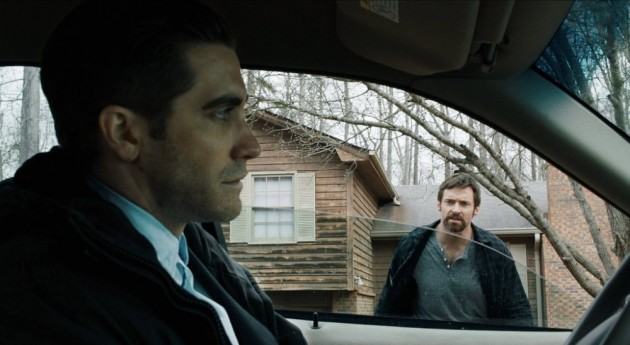
Denis Villeneuve’s English speaking debut, Prisoners
This embryonic “Hollywood North” in Montreal withered after a few years, in part because the tax shelter provision which encouraged private investment in film production was eliminated. Dilley argues that the main reason, however, was that the nationalist cultural policies of Quebec governments, in particularly those of the Parti Québécois government elected in 1976, triggered the departure of many non-francophones from Quebec, including important industry figures, and this “brought an end to the potential of a concentrated feature film industry, able to work in both languages in collaboration with the international film producers from wherever” (249-250). 7 Although some may dispute the reason, she is correct that many, though certainly not all, of the major anglophone figures in the Montreal film industry left the province in the early 1980s, and this inevitably sharply reduced the number of locally produced English-language films, as the Quebec film industry took a very different path than the one Dilley champions.
This is an impressive book that fills important gaps in the story of how a feature film industry was established in Canada, and is of obvious interest to anybody researching, or even just curious about, Canadian cinema. Dilley’s writing style is smooth and readable, her research extensive, and her arguments not only provocative, but also often very persuasive. However, some of the conclusions she draws can be questioned.
For example, it is reasonable to ask whether the failure to create a tax shelter-fuelled “Hollywood North” in Montreal was really a lost opportunity. The problem is not that there is anything necessarily wrong (or “un-Canadian,” a sin often ascribed to the producers of the “tax shelter” films) with making films primarily for an international market, except when, as was the case here, so little room was left for any other kind of cinema. Dilley concedes that “French-language films had a difficult time during the tax-shelter years” because “the industry in Quebec simply moved with the money and produced different sorts of films” (247). That is, the influx of private investment and Canadian government money (from the CFDC) was primarily drawn to the types of films which could exploit these new Hollywood connections and be marketed in the U.S.: English-language genre films that could pass for American. While some fine French-language films were made during this period, notably Les bons débarras (Francis Mankiewicz, 1979) and Les Plouffe (Gilles Carle, 1981), talented filmmakers such as Claude Jutra, Jean Beaudin, André Forcier, and Denys Arcand, along with several others, were unable to make the kind of films that brought them to critical attention in the first place. Nor was this true only for francophone filmmakers. While Dilley cites Paul Almond, Gordon Sheppard, Frank Vitale, and Larry Kent as examples of Montreal’s thriving English-language cinema, the personal films they are remembered for were made before and up to the mid-1970s; they also found it difficult to find funding for material suited to their talents and sensibilities during this period. In retrospect, Cronenberg is one of the very few who seems to have been able to consistently make films that were both personal and fit into the commercial requirements of the “tax shelter” productions.
A key assumption of Dilley’s argument is that the ideal Canadian film industry is one that is both commercial and self-sustaining, and presumably, after a start-up period, in no need of financial help from the state. This type of industry would necessarily be largely English-language and focus on films that could be exported to foreign markets, particularly the United States. As she writes, “a market of French Canadians alone would have great difficulty generating enough revenue to make a feature film industry possible. Yet because of language, accent, and point of view, it was difficult to penetrate either a North American market or a French one” (190). While its development would probably not have been possible without the industry infrastructure created during the “tax shelter” period, the cinema that has developed in Quebec since the 1980s is based on a very different model, one that finds nothing wrong with government subsidies for the arts and sees a social good in people seeing themselves and their stories on a movie screen.
Given the relatively small size of Quebec’s population that Dilley points to, the province’s industry model does not measure a film’s success by its ability to earn back its production costs, although everyone is of course delighted on the extremely rare occasions this happens. Instead, one way a film can be considered successful is through attaining for Quebec the cultural cachet associated with good reviews and prizes on the festival circuit, which explains why filmmakers popular with international critics can repeatedly receive funding for their projects in spite of widespread indifference among local audiences. 8 A film is also pronounced a success if it draws a large domestic audience, even if it’s neither a critical favourite nor able to draw a big enough audience to turn a profit. A good example is Louis Cyr (2013), the unpretentious period biopic of the legendary strongman and Quebec folk hero, which pulled in nearly half a million customers and earned over $4 million at the province’s box office, making it one of the most popular local productions of the past decade. However, given that it failed to earn back even half of its $8.5 million dollar budget and its cultural specificity meant that it had no chance of being released outside Quebec, this, like the non-commercial festival films, could never be made in the commercial, Hollywood North-style industry preferred by Dilley. What generous government subsidies do is allow Quebec filmmakers to speak directly to their audience about subjects they can relate to and not spend time worrying about what might sell in the American market. The result is that a lively, distinctly local cinema has developed that not only produces feature films that earn international critical recognition and festival prizes, but also is capable of turning out the occasional film that outdraws imported Hollywood blockbusters at the box office. There are even, as in the case of Les invasions barbares (Denys Arcand, 2003) or Incendies (Denis Villeneuve, 2010), films that have done both.
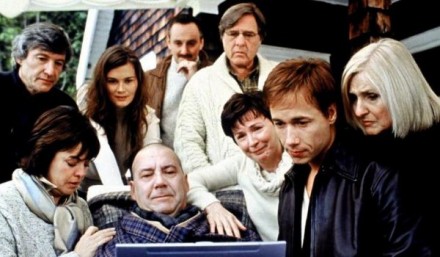
Les Invasions Barbares (Denys Arcand, 2003)
One of the most interesting questions Dilley raises concerns the nature of this cinema that has emerged in Quebec, asking whether English-language films “belong in a discussion about cinéma québécois” (249). Her revisionist take on the province’s cinema is rooted in a passionate belief that all films made here should be considered Quebec films, not just those made in French by francophone directors. And, in fact, the Quebec film scene is quite diverse. While Dilley implies that they virtually disappeared in Quebec after the early 1980s, a steady (if thin) stream of English-language films have been produced since the “tax shelter” years. There are also foreign “runaway productions” (typically, but not exclusively, from Hollywood) which often use local crews, special effects and animation labs, and supporting actors, as well as an increasing volume of media activity from the province’s Indigenous peoples, particularly in the fields of documentary and TV. Meanwhile, even in its current reduced form, the NFB remains a player, still plugging along with a menu of shorts, documentaries and animated films. Inevitably, there is a fair amount of fluidity between these various types of cinema. Producers such as Roger Frappier and the late Kevin Tierney have made films in both languages; technical crew members in Montreal will routinely alternate between French- and English-language productions; and actors like Roy Dupuis and Pascale Bussières have worked in English, as have many of the industry’s most prominent filmmakers, including Claude Jutra, Denys Arcand, Yves Simoneau, Christian Duguay, Denis Villeneuve, Philippe Falardeau, and, most recently, Xavier Dolan.
However, despite this diversity, it makes sense to look at Quebec’s French-language films as constituting a national cinema that should be analyzed separately from the province’s other cinema practices. Doing this makes it possible to trace a line, beginning with the “priest film” documentaries of Marcel Proulx and Albert Tessier in the 1930s, through the low budget films of the 1940s and early ‘50s, the increasingly nationalist features of the period covered by Dilley , and on up to today, and find a coherent group of films that share not just a language, but a discourse on language, identity, and nation which is not necessarily shared by the province’s English-language films, let alone those made more recently by its Indigenous peoples. It is not that anglophone filmmakers do not deal with the same issues as this cinéma québécois, but the lens is often very different. An obvious example of this is that Quebec’s English-speaking minority has been largely invisible in the province’s French-language cinema, except for the occasional villain, since the mid-1960s. 9 In the province’s English-language films, however, there are almost always major francophone characters, and the English-French relationship is often central to the story. Mixing these two cinemas together blurs the distinctiveness of both.
What might be useful is not only a documentation of the non-francophone presence in Quebec’s film industry (for which Dilley’s book offers an excellent start), but a charting of the relationship between the province’s French- and English-language cinemas. It is certainly possible to see an engagement with similar themes in both cinemas during the 1970s, particularly in the work of a director like Robin Spry, but is it possible to identify an anglo-Quebec cinema, distinct from both le cinéma québécois and that of “English Canada,” but featuring aspects of both? If so, what are these aspects? What aspects aren’t shared? Regardless, one of the pleasures of Dilley’s book is that it offers a springboard to this and other lines of further research, such as exploring her assertion that English Canadian cinema was damaged by the decentralization of production rather than centralizing it in Toronto, which would have been a similar approach to the Quebec film industry’s focused presence in Montreal.
The questions Dilley raises are often very pertinent to contemporary Canadian and Quebec cinema. For example, the tax shelter vs. local cinema argument persists in Telefilm Canada’s championing of co-productions or the federal government deal with Netflix on the one hand, and the recent increase in subsidies for micro-budget local films on the other. While Dilley’s book focuses on events in the 1960s and ‘70s, its main purpose is to show the key choices that were made, and how they were made, that helped determine what our film industry has become since.
Notes
- The Professional Association of Filmmakers ↩
- A few years later, Laporte would be kidnapped and murdered by the FLQ (Front de Libération du Québéc) during the October Crisis of 1970. ↩
- In his two volume history, Le cinéma québécois: à la recherche d’une identité? Vol. 1.: L’imaginaire filmique, Vol. 2.: Les politiques cinématographiques (2004). ↩
- And some, of course, like Reitman, Cronenberg, and Moyle, had success in Hollywood as well. ↩
- This was not true of all the era’s films, of course, as clever genre films like The Silent Partner (Daryl Duke, 1978) and My Bloody Valentine (George Mihalka, 1981) made expressive use of their Canadian locations and, arguably, weaved distinctively Canadian themes into their narratives. Still, these were the years when the notorious U.S. flags on character’s desks and vaguely American locales became all too common in Canadian cinema. ↩
- For example, see the essays on Death Weekend (William Fruet, 1976) and Rituals (Peter Carter, 1977) in The Canadian Horror Film (2015), edited by Gina Frietag and André Loiselle ↩
- She admits that her “alternate narrative . . . may not resonate with French-Canadians,” which is a reasonably safe bet. ↩
- The archetypal example is Denis Côté, who has directed 11 feature films (including several documentaries), all of which have sold less – in some cases, a lot less – than 10,000 tickets in Quebec cinemas. Even Xavier Dolan, currently the province’s best known filmmaker around the world (who still makes films in Quebec), has only had two of his six French-language features draw more than 100,000 customers: J’ai tué ma mère (2009) and Mommy (2014). His other films have, like those two, won multiple awards at international festivals, but unlike them, were box office flops in his home province. ↩
- The best known exception is Le chat dans le sac (Gilles Groulx, 1964). There have been a handful of other films since that have included significant anglophone characters, such as La vie fantôme (Jacques Leduc, 1992) or Funkytown (Raymond Bouchard, 2011), but the list is short. It is notable that the sympathetic English-speaking co-star of the very popular Bon Cop Bad Cop (Éric Canuel, 2006) is not a Quebec anglo, but an English Canadian imported from Toronto. ↩




